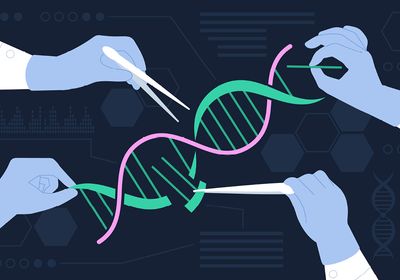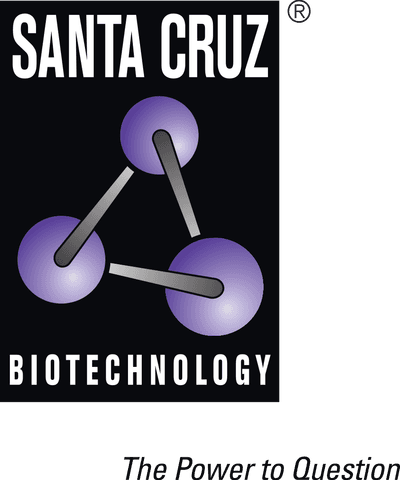
Since the first reported cases in 1981, the human immunodeficiency virus (HIV) infected approximately 86 million people and resulted in the deaths of tens of millions of people from acquired immunodeficiency syndrome (AIDS) complications.1 To address the epidemic, researchers all over the globe made concerted efforts to discover and design treatments. The most common treatment involves anti-retroviral therapy (ART), which attacks the virus and allows the immune system to recover. These treatments, while effective, are costly, must be administered long term, and are inaccessible to many people throughout the world. So, while HIV/AIDS no longer has to be deadly, death tolls remain significant and there is still no cure. Researchers are now looking for ways more effectively eliminate the virus long term using novel concepts and cutting edge methods.
HIV is a retrovirus that infects immune cells and inserts its DNA into the host genome, hijacking the host cell to produce and release more viral particles that infect other cells. According to a recent study in Molecular Therapy Nucleic Acids, researchers at the Lewis Katz School of Medicine at Temple University introduced a treatment method for not only removing the HIV DNA from infected immune cells, but also preventing the reinfection of additional cells.2 Kamel Khalili, a professor at Temple University and the senior author of this study, began his career as a microbiologist working on gene inactivation in bacteria. This previous experience led him to hypothesize that a cure for AIDS could require a genetic inactivation strategy. “In other words, the face of the disease changes from an infectious disease to a genetic disease,” said Khalili.
It's time that we really eliminate the virus for good. And I think we are at that stage, and the technology and tools are available.
-Kamel Khalili, Lewis Katz School of Medicine at Temple University
In earlier studies, Khalili and his team successfully excised HIV DNA from immune cells’ genomes using CRISPR-Cas9 techniques.3 However, this methodology did not prevent viral reinfection of neighboring cells. To enter other cells, HIV’s protein envelope must go through multiple glycosylation events, adding sugar moieties to the viral surface while in the infected cell. Therefore, the researchers came up with two goals. “One is that we eliminate the integrated copy of the virus. And the second is that maybe we can interrupt glycosylation of the viral envelope protein so if any viruses escaped from the [excision], they won't be infectious,” said Khalili.
In the current study, the researchers inactivated mannosyl oligosaccharide glucosidase (MOGS), a gene essential to viral protein glycosylation, using CRISPR-Cas9 in immune cells derived from patients infected with HIV. This prevented glycosylation of the HIV viral envelope and, therefore, its ability to infect other cells. By combining HIV excision and MOGS inactivation, the team hopes to introduce a more effective and long-term treatment for HIV/AIDS.
Khalili and his team further perfected their technique by only inactivating MOGS in infected immune T cells using an HIV-specific promoter sequence. “We wanted to make sure that the manipulation of the cellular gene is specific to the cells that are infected with the virus…to make it a little bit safer because we are talking about the inactivation of the viral gene, and at same time, editing your cellular genome,” said Khalili.
“I think you can argue that there hasn't been much discussion about targeting [cellular genes] using the CRISPR-Cas9 system. The one advantage here is that the virus can mutate but this cellular protein won't,” said Thomas Hope, a professor at Northwestern University who was not involved in the study. “They have to show that they can get their [system] into the cells, in a living thing, where they need it to go. And I think that is a challenge for a lot of these techniques.”
Although current antiretroviral therapies are effective, patients still report negative effects either from the continued presence of the virus in the body or from the antiretrovirals themselves.4 A longer-term treatment could also be more accessible in disadvantaged countries. “It's time that we really eliminate the virus for good. And I think we are at that stage, and the technology and tools are available,” said Khalili “Hopefully, very soon we will get there.”
REFERENCES
- “Global HIV statistics 2023 fact sheet,” UNAIDS, https://www.unaids.org/sites/default/files/media_asset/UNAIDS_FactSheet_en.pdf, accessed August 6, 2023.
- Liu H, Chen C, Liao S, et al. Strategic self-limiting production of infectious HIV particles by CRISPR in permissive cells. Mol Ther Nucleic Acids. 2023;32:1010-1025
- Dash PK, Chen C, Kaminski R, et al. CRISPR editing of CCR5 and HIV-1 facilitates viral elimination in antiretroviral drug-suppressed virus-infected humanized mice. Proc Natl Acad Sci U S A. 2023;120(19):e2217887120.
- Chawla A, Wang C, Patton C, et al. A Review of Long-Term Toxicity of Antiretroviral Treatment Regimens and Implications for an Aging Population. Infect Dis Ther. 2018;7(2):183-195.





